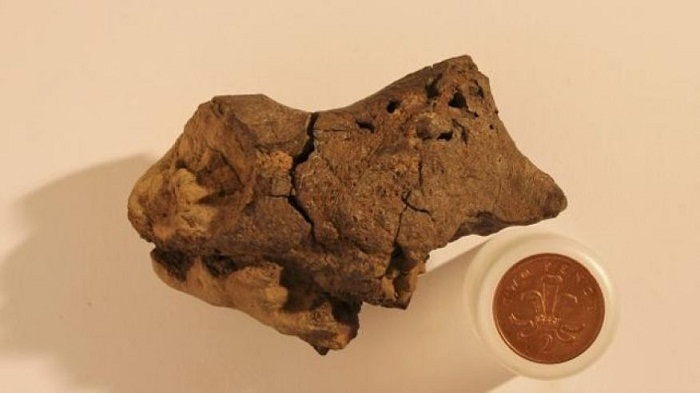Brown pebble found on beach is first known dinosaur brain fossil

It is believed the creature must have died near water with its head buried in sediment in a swamp or boggy ground, allowing its brain to be "pickled" and preserved.
Dr Alex Liu, from Cambridge University`s Department of Earth Sciences, said: "The chances of preserving brain tissue are incredibly small, so the discovery of this specimen is astonishing."
Analysis of the fossil has revealed similarities with the brains of birds and crocodiles - both close relatives of dinosaurs - living today.
The `pebble` was discovered by fossil hunter Jamie Hiscocks on a beach near Bexhill-on-Sea in 2004, but it has taken until now for its significance to come to light.
"I have always believed I had something special," Mr Hiscocks said. "I noticed there was something odd about the preservation, and soft tissue preservation did go through my mind."
The find`s importance was first recognised by the late Oxford University professor Martin Brasier, who was one of the world`s leading palaeobiologists and co-led the research before his death in a road accident two years ago.
It has now been highlighted in a special publication of the Geological Society of London published in tribute.
Mr Hiscocks said the professor had realised the potential significance "right at the beginning".
He said: "In his initial email to me, Martin asked if I`d ever heard of dinosaur brain cells being preserved in the fossil record. I knew exactly what he was getting at.
"I was amazed to hear this coming from a world-renowned expert like him."
Dr David Norman, from Cambridge University, who worked with Professor Brasier, said: "What we think happened is that this particular dinosaur died in or near a body of water, and its head ended up partially buried in the sediment at the bottom.
"What`s truly remarkable is that conditions were just right in order to allow preservation of the brain tissue.
"Hopefully, this is the first of many such discoveries."















































